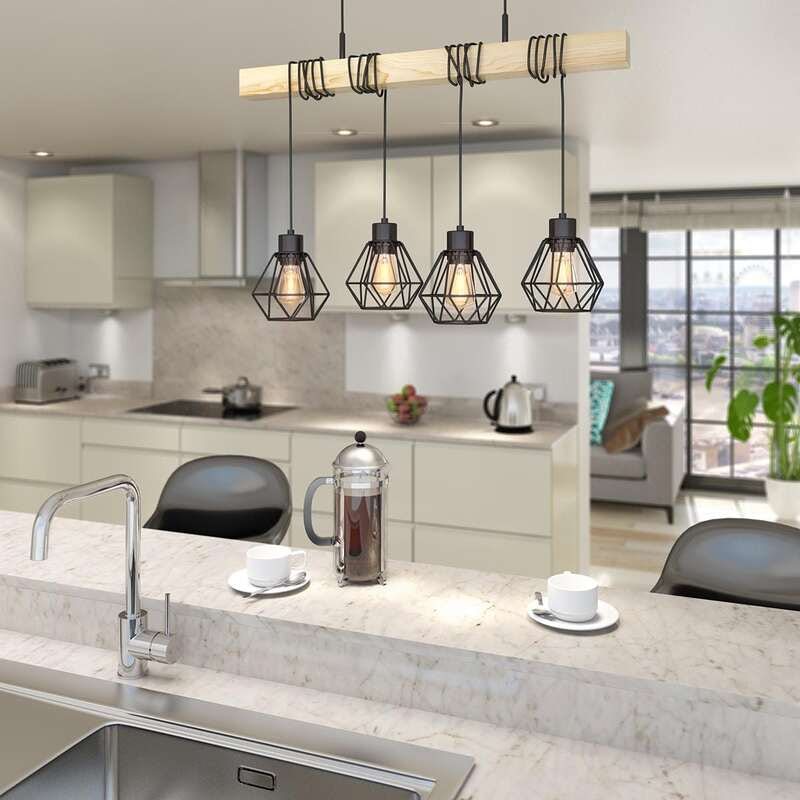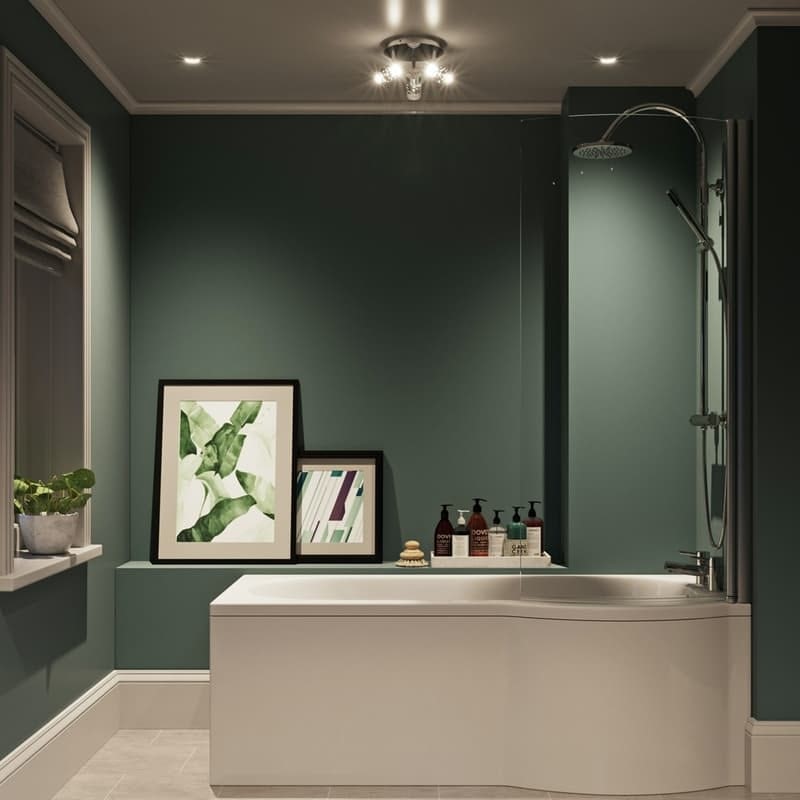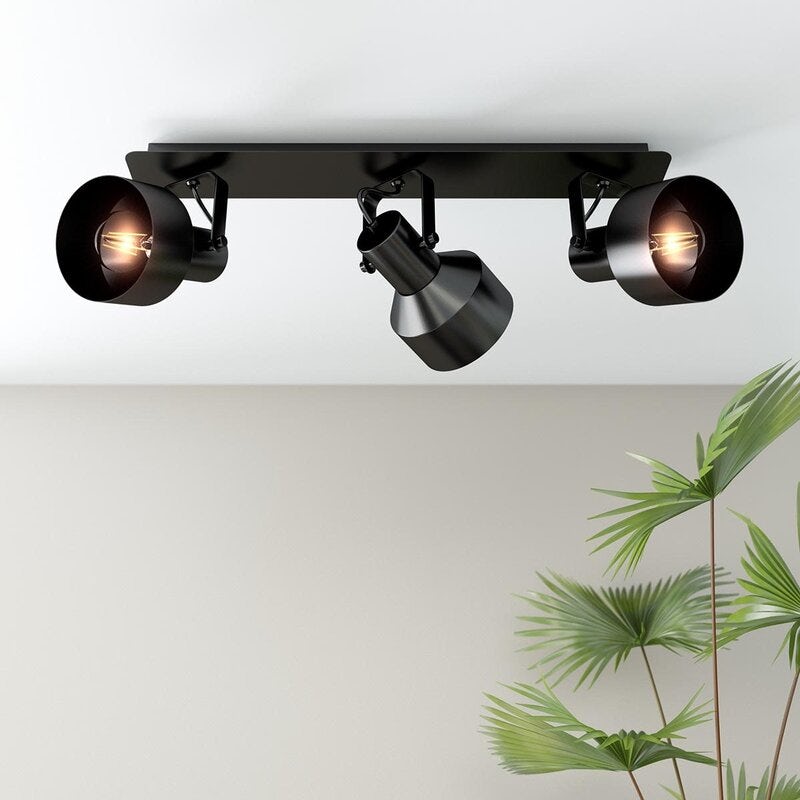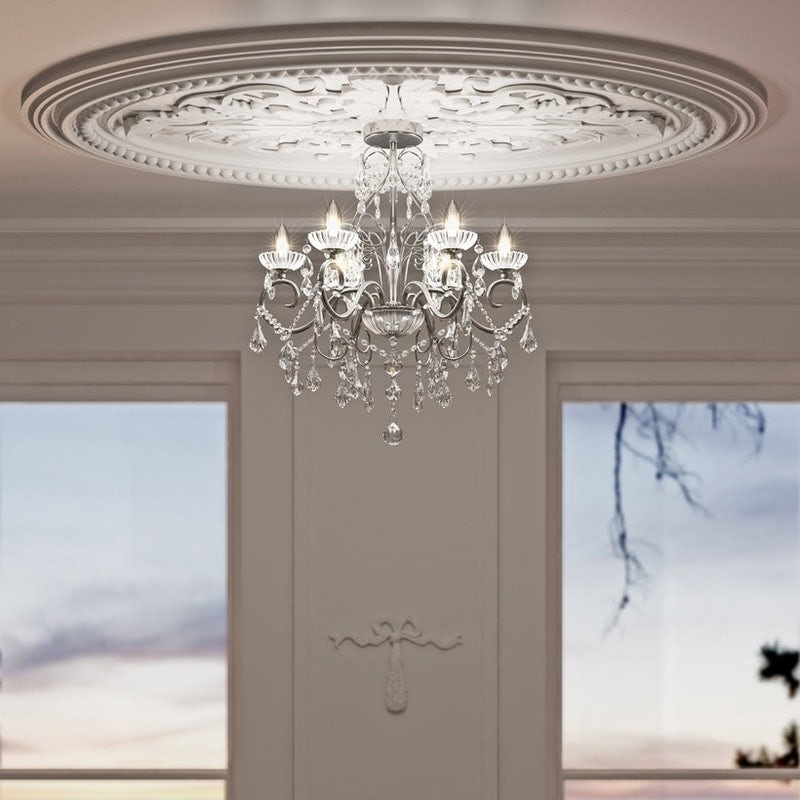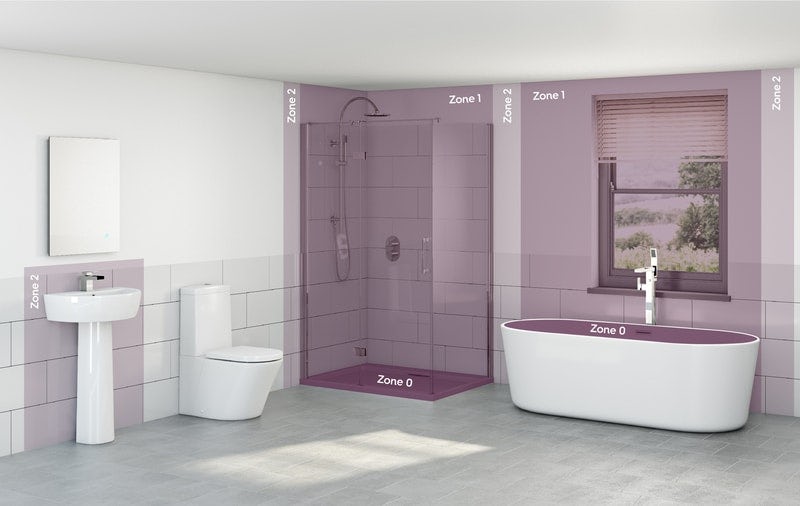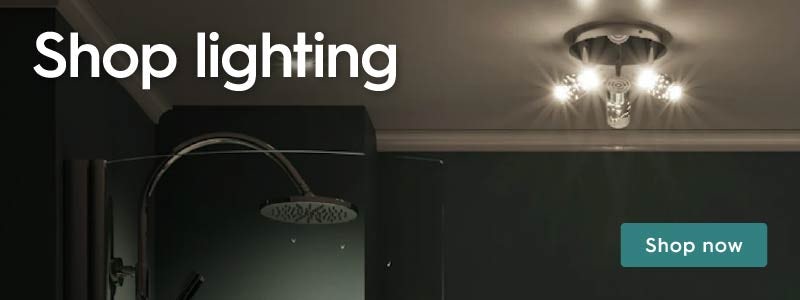Can switching to LED lighting in your home really save you money? We found out…
With energy bills on the rise and many of us having to tighten our belts more than ever, it’s important to examine every little way we can save cash. And, when it comes to lighting your home, there are many bright ideas out there.
Apart from switching off lights when we leave a room and only turning on the lights when we really need to, there plenty of other things we can do.
For instance, switching to LED lighting really does—quite literally—pay off over time. That’s because lighting makes up a pretty big 15% of typical UK household electricity costs. A switch from fluorescent lighting to LED could see you save up to £232 a year.
Replacing all bulbs in your home may mean you forking out around £100 for buying the bulbs in the first place, but your move has already paid for itself within 3 years. Consider too that although the cost of a 5W LED GLS is £5.40 (compared to a standard 40W GLS pearl filament bulb at £1.29) the LED bulbs last for 20,000 hours compared to just 1,000 for the incandescent bulb. Having to pay for a further 20 incandescent bulbs would cost a total of £25.80, making this the far more expensive lighting option in the long run.
And here’s an eye-watering figure to consider—leaving just one light on in the home every night when we go to bed is costing UK households £4.4 billion every year. Sleep on that!
There are some stunning lighting designs on the market, like this Eglo Townshend kitchen light in black and oak. So, how do you save money on your energy bills? Read on...
What exactly is LED lighting?
You’ll no doubt be familiar with the term LED lighting these days. But you may not be quite sure how it differs from other forms of lighting, like incandescent, compact fluorescent and halogen. Here is a quick summary of all 4 types of lighting, together with the pros and cons of each:
LED lighting
Light Emitting Diode (LED) lights have been top of the home—and office—lighting list for many years now. And there are plenty of reasons for this. Apart from the cost-saving aspect, there is also the fact that LEDs are available in either warm or cool colours—a factor which can instantly change the atmosphere in a room. Not only that, but the bulbs can also be dimmed, which uses less electricity, providing another cost-saving.
Money-saving
The reason LEDS are so energy efficient and less expensive to use is that the filament in the bulb doesn’t need to be heated for it to work. This is despite the fact they can produce the same amount of light as incandescent bulbs (formerly, the most popular form of lighting).
Environmentally friendly
LEDs are also longer-lasting—resulting in a cost saving and an environmental benefit since they don’t have to be disposed of in landfill at such high numbers. Some lighting fixtures—usually for difficult to reach areas—contain built-in LED lighting and these can last for much longer—up to 50,000 hours, in some cases.
Another aspect which makes LED bulbs more environmentally-friendly is that they don’t contain mercury—a toxic chemical which, when disposed of, ends up in water, fish, shellfish and any animals which eat fish (including humans).
The technicals
LEDs work with the use of a semiconductor. Electricity flows through the semiconductor with light emitted when it “jumps” across a nonconductive area.
The advantages of using LED lighting
- Less expensive to run than other forms of lighting
- Longer-lasting, so don’t have to be replaced as often
- Can offer different forms of lighting, e.g. softer for ambient lighting and cool white for task lighting in the bathroom and kitchen (which LED bulbs are particularly good for)
The potential drawbacks of using LED lighting
- More expensive than other bulbs to buy initially, although they do last much longer
- The light is more focused in one direction rather than in the more rounded (360 degrees) form that other bulbs give out
LEDs are perfect for bathrooms. Central fixtures, like the Forum Apollo bubble 3 light bathroom spotlight (pictured above) can even be supplemented with downlighters
Incandescent lighting
THE only real form of lighting for households for a century following the demise of gas lighting, incandescent bulbs were what most of us grew up with. It was only really after 2009 that LED bulbs became available in an affordable form for our homes. That’s when incandescent bulbs began to be phased out.
Incandescent bulbs aren’t expensive to buy, with the typical bulb lasting for up to a year. They give out a pleasant warm light and can create an ambient atmosphere when used in lamps or when dimmed. It’s the poor energy efficiency they provide, as well as the poor eco aspect, that has led to their demise over the past decade or so, to the extent that LED has now become the most popular form of household lighting.
The technicals
It was Thomas Edison who invented the incandescent bulb by discovering that when electricity heats up a metal filament, such as tungsten, you’ll get light. Put this in a glass casing (in this case, a bulb) with an inert gas such as nitrogen or krypton, and the product will last longer.
The advantages of incandescent lighting
- Bulbs aren’t expensive to buy and are easy to fit
- They’re available in a wide range of sizes
- Give off a warm light
- Can be used with a dimmer switch
The potential drawbacks of incandescent lighting
- The bulb becomes very hot after it has been on for a time, to the extent it has to cool down before it can be removed
- If the bulb is placed near a vibrating source, such as a ceiling fan or a garage door, then this can cause the filament to break
- The bulb itself is dangerous when broken, with glass shards proving hazardous to bare feet
- Halogen and incandescent bulbs emit carbon into the atmosphere
Many lighting fixtures, like the Eglo Casibare 3 light ceiling spotlight (pictured above) are compatible with incandescent, halogen and LED bulbs. So, it pays to choose your bulbs carefully
Halogen lighting
Often referred to as the “improved version of incandescent lighting”, halogen bulbs also use a tungsten filament. The difference is, it lasts longer than incandescent lighting.
Like both LEDs and incandescent bulbs, halogen fittings can also be dimmed, and the light is good. It’s also inexpensive to buy and costs less than incandescent to run (but more than fluorescent and LED lighting).
Some halogen bulbs, such as kitchen spotlights, were banned by the UK government in 2018 due to poor energy inefficiency.
The technicals
Your halogen bulb contains a smaller bulb within it. It’s in this smaller bulb that the tungsten filament sits. Inside, there’s also halogen gas (such as bromine or iodine—both in some cases). The gas allows the filament to last longer.
The advantages of halogen lighting
- It’s relatively inexpensive to buy
- It provides a nice white light, similar to that found at noon
- Works well as an under-cabinet light or other forms of recessed lighting. Also looks good on a low-lying pendant light
- Warms up quickly
- Good for external floodlights
The potential drawbacks of halogen lighting
- Halogen isn’t an energy-efficient form of lighting. In fact, it’s the second least efficient (incandescent being the first)
- It’s important to wear gloves when changing a halogen lightbulb otherwise the bulb could explode when it comes into contact with the natural oils on your hands
Compact Fluorescent Lighting (CFLs)
Often found in offices, garages and kitchens of yesteryear, CFL provides an intense light, over a large area. This makes them ideal for large retail environments too. They are especially useful in situations where it’s important to “stay awake” and see clearly what you’re doing (hence the reason they’re found mainly in working environments).
Another reason you’ll find them in commercial outlets is that they’re reasonably long-lasting. A typical CFL will run for 10,000 hours (as opposed to the typical 1,000 hours of an incandescent bulb). They’re also available in a wide range of colours, so good for shop displays, etc.
The bulbs can take quite a while to warm up, but when they do the intensity of the light increases.
The technicals
There’s no filament in CFL. Instead, the bulbs take the form of a glass tube which is coated internally with phosphor powder and filled with inert gas, together with some mercury. It’s electricity flowing through this tube that charges the mercury, making it emit ultraviolet (UV) light. This UV is absorbed by the phosphor powder, turning it into visible white light.
The advantages of CFL
- They are energy efficient
- They can be recycled once the bulb is finished
- Great for task lighting where you want to be able to see what you’re doing
- Longer-lasting than halogen or incandescent bulbs, so don’t have to be replaced that often
- Come in a variety of different shapes
- Less expensive to purchase than LEDs
The potential drawbacks of CFL
- Like incandescent bulbs, a fluorescent bulb shouldn’t be placed near a vibrating source otherwise the filament could break
- The light itself can be harsh, so fluorescent lighting doesn’t work if you’re looking for an ambient atmosphere
- Contains mercury, so it’s not eco-friendly
- Can take a long time to warm up
Annual lighting cost comparisons
For a relative cost comparison of running different types of lighting (for specific time periods per day) across a calendar year (with CO2 emissions in brackets), please see the table below.
| Type | Power | 6 hours | 12 hours | 18 hours | 24 hours |
|---|---|---|---|---|---|
*Source: confusedaboutenergy.co.uk. Despite the different power measurements, each bulb gives out the same amount of light (1600 lumins) and are all equivalent to a 100 Watt incandescent bulb.
Save money using clever lighting
The best way to save money on lighting in your home is to use natural light as much as possible. The trend for floor-to-ceiling glass panels in rear extensions has made this a reality for many homes—especially with the addition of roof panels.
Dormer windows in loft conversions are great for introducing natural light into studies or bedrooms. But what about your bathroom? In many homes, the bathroom tends to be the smallest room in the house, with the least number of windows. Because of this, artificial lighting is often needed. But that doesn’t mean you have to spend a fortune keeping spotlights or a large overhead bulb on while you’re in there the entire time.
LED bathroom mirror
An LED bathroom mirror is perfect for adding light and atmosphere. Switch off the main light and enjoy the more subtle ambient lighting as you relax in the bath at the end of a tough day. The light is often strong enough to read with too.
LED bathroom mirror lighting can also act as task lighting when you need to shave or put on make-up. And, let’s face it, you’re going to want a mirror in your bathroom anyway, so why not get an illuminated LED version? Get one with a demister and infrared hands-free on/off switch and you can use it immediately after your bath or shower, even if your hands are soaking wet.
The really good news, when it comes to buying an LED bathroom mirror, is that there’s such a wide variety of sizes and shapes to fit from the smallest to the largest bathroom. You can have fun choosing a quirky design or just go for the big Hollywood mirror in-your-face thing. You and your visitors will love the extra glamour when popping to the bathroom.
An LED bathroom mirror, like the Wyatt from Mode Bathrooms, can be used immediately after showering or bathing, thanks to a handy demister function
How to save money on lighting your home
For many of us, our homes have been transformed by smart technology. We can fire up our heating systems from the office and check who is at the door when we’re out socialising by using a camera security system. But what about our bathrooms? Other than LED mirrors, how has technology made its mark there?
Well, nowadays it’s possible to start heating up the water for your bath from an app on your phone or tablet. And, with a smart or digital shower or bath filler you can standardise the temperature, so there’s no walking under a cold shower and waiting for it to heat up for the first couple of minutes.
It’s just a seamless transition from your bed to your shower. You can also set up the shower for how long you want. That way, if it’s only on for 4 minutes every morning, you’ll know exactly how much electricity you’re using to power it. And why not get Alexa to fill your bath? That way you can continue to watch your favourite TV programme or finish washing the dishes as your bath water pours.
Underfloor heating in your bathroom is another item these days that can be controlled from your bed. Or, set it up to come on at the same time every morning, meaning the days of walking on cold vinyl or stone tiles every morning are long gone. It’s ideal if you have a small bathroom since there’s no radiators to get in the way. Find out exactly how much you can save by using the right heating.
Even ornate lighting, like this Forum Solen 5 light bathroom chandelier, can be energy-efficient, complete with LED bulbs
Choosing lighting for your bathroom “zones”
Our bathrooms can be split into areas or “zones” to make it easier for us to choose the right lighting for that particular space. But it’s also a requirement for UK fixed electrical wiring regulations BS 7671:2008. This looks at the design, installation, testing, verifying and certifying of electrical installations.
This is a “must” in bathrooms due to the possibility of water interfering with electrics. As such, the zones look at the risks involved, taking into account any windows, doors, walls, partitions and the ceiling of the room.
There are 4 zones in total (which are indicated in the image below). The first zone 0 is the area occupied by a bath or shower, where water is designed to flow or be collected. Above the bath or shower is zone 1. Here only low voltage devices can be fitted (such as temperature changing shower heads, etc). The same applies for zone 2, which is the area to the side of the bath or shower. In zone 3, portable equipment can be installed, such as a hairdryer, shaver, etc.
Lights in your bathroom should ideally be enclosed rather than hanging, e.g. spot lights rather than a pendant shade. They should also be operated using a pull cord rather than a switch where wet hands could come into contact with the electrics—something no homeowner wants to encounter.
Read our guide for more information on bathrooms and electrics
More advice on lighting for your home
At Victoria Plum, we’re full of bright ideas (if you pardon the pun) for illuminating not just your bathroom but your entire home. For more specific advice, why not read our bathroom lighting buying guide or find out how to create more light in a dark bathroom. Looking to cut your bills? Why not check out our energy-saving advice for your home?
Shop kitchen and bathroom lighting
Delivered direct to your door, at Victoria Plum you’ll find a huge range of stylish lighting for your kitchen and bathroom, including wall lights, ceiling lights, downlights and undercabinet lighting. And, if you’re feeling festive, we even stock Christmas lighting. Simply click on the image below to begin browsing.

